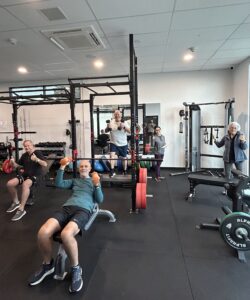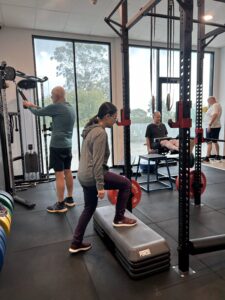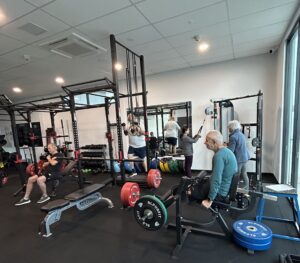How Movement Can Help You Manage and Minimise the Effects of OA
Osteoarthritis (OA) is the most common form of arthritis, affecting millions of people worldwide. Often referred to as “wear and tear” arthritis, OA is a degenerative joint condition that occurs when the protective cartilage that cushions the ends of bones gradually wears down over time. While it most commonly affects the knees, hips, hands, and spine, OA can occur in any joint and can significantly impact mobility, comfort, and quality of life.
At Connect Healthcare, we understand how frustrating osteoarthritis can be – and we’re here to help. Through tailored group exercise classes and expert guidance, we’re committed to helping you move better, feel stronger, and live more comfortably with OA.

What Causes Osteoarthritis?
Osteoarthritis is caused by a combination of mechanical and biological processes that lead to joint degradation. Over time, the cartilage that cushions your joints breaks down, resulting in bones rubbing together, inflammation, stiffness, and pain. Factors that increase the risk of OA include:
- Age: Risk increases as you get older.
- Joint Injury: Past injuries or repetitive use can accelerate joint breakdown.
- Genetics: A family history of OA can raise your risk.
- Obesity: Excess weight increases stress on weight-bearing joints.
- Muscle Weakness & Inactivity: Poor muscle support around joints may contribute to joint strain and wear.
Common Symptoms of Osteoarthritis
OA symptoms typically develop gradually and worsen over time. They include:
- Joint pain during or after movement
- Stiffness, especially after resting or waking up
- Swelling or tenderness around joints
- Reduced range of motion
- Clicking, cracking, or grating sensations in the joint
Although OA is a chronic condition, the severity of symptoms and rate of progression can vary greatly from person to person.
Why Exercise Is a Game-Changer for OA
It might seem counterintuitive, but movement is one of the most effective ways to manage osteoarthritis. Many people with OA avoid activity out of fear it will worsen pain. However, regular, appropriate exercise has been proven to improve joint function, reduce stiffness and discomfort, and slow OA progression.
Here’s how exercise can help:
Reduces Joint Pain and Stiffness: Movement helps lubricate joints and nourish cartilage, which can reduce stiffness and discomfort. When joints move regularly, they stay healthier.
Strengthens Muscles Around the Joint: Stronger muscles provide better support and stability to affected joints, reducing mechanical stress and protecting the joint from further damage.
Improves Mobility and Function: Exercise increases range of motion and flexibility, making it easier to perform daily activities like walking, getting out of a chair, or climbing stairs.
Helps Manage Weight: Maintaining a healthy weight reduces load on weight-bearing joints like hips and knees, which can significantly reduce pain and improve mobility.
Enhances Mental Health and Confidence: OA can be emotionally taxing. Exercise releases endorphins, improves mood, and builds self-confidence—crucial factors in long-term management.

The Importance of Tailored and Supervised Exercise
Not all exercise is created equal, especially when dealing with OA. The key is to find the right type and dosage of movement, tailored to your body and needs. That’s where working with professionals—like exercise physiologists—can make a major difference.
At Connect Healthcare our OA group classes are specifically designed to:
- Improve joint function and stability
- Safely strengthen key muscle groups
- Reduce pain and increase movement confidence
- Build long-term self-management strategies
- Foster connection and motivation in a supportive group setting
We combine evidence-based exercise programming with personal guidance, ensuring every session is safe, effective, and tailored to your level of ability. Whether you’re newly diagnosed or have been managing OA for years, we’re here to support your journey.
What Our Group Classes Involve
Our osteoarthritis classes typically include:
- Warm-up and mobility drills to reduce stiffness
- Strength training using resistance bands, bodyweight, or light weights
- Balance and stability work to reduce fall risk
- Low-impact cardio to improve endurance and circulation
- Cool-down stretches and breathing for recovery and relaxation
All exercises can be modified to suit your fitness level and joint health. The classes are welcoming, encouraging, and paced so everyone can benefit—no matter your age or experience.
Take the First Step Toward Easier Movement
Living with osteoarthritis doesn’t mean giving up on movement. In fact, it means moving more—just more wisely. With the right approach, exercise can be empowering, enjoyable, and transformative for managing OA.
If you or someone you know is living with osteoarthritis, we’d love to help. Join our OA-friendly group classes and experience the benefits of guided movement in a safe and supportive environment.
Get in touch with us today to learn more or book your spot!

